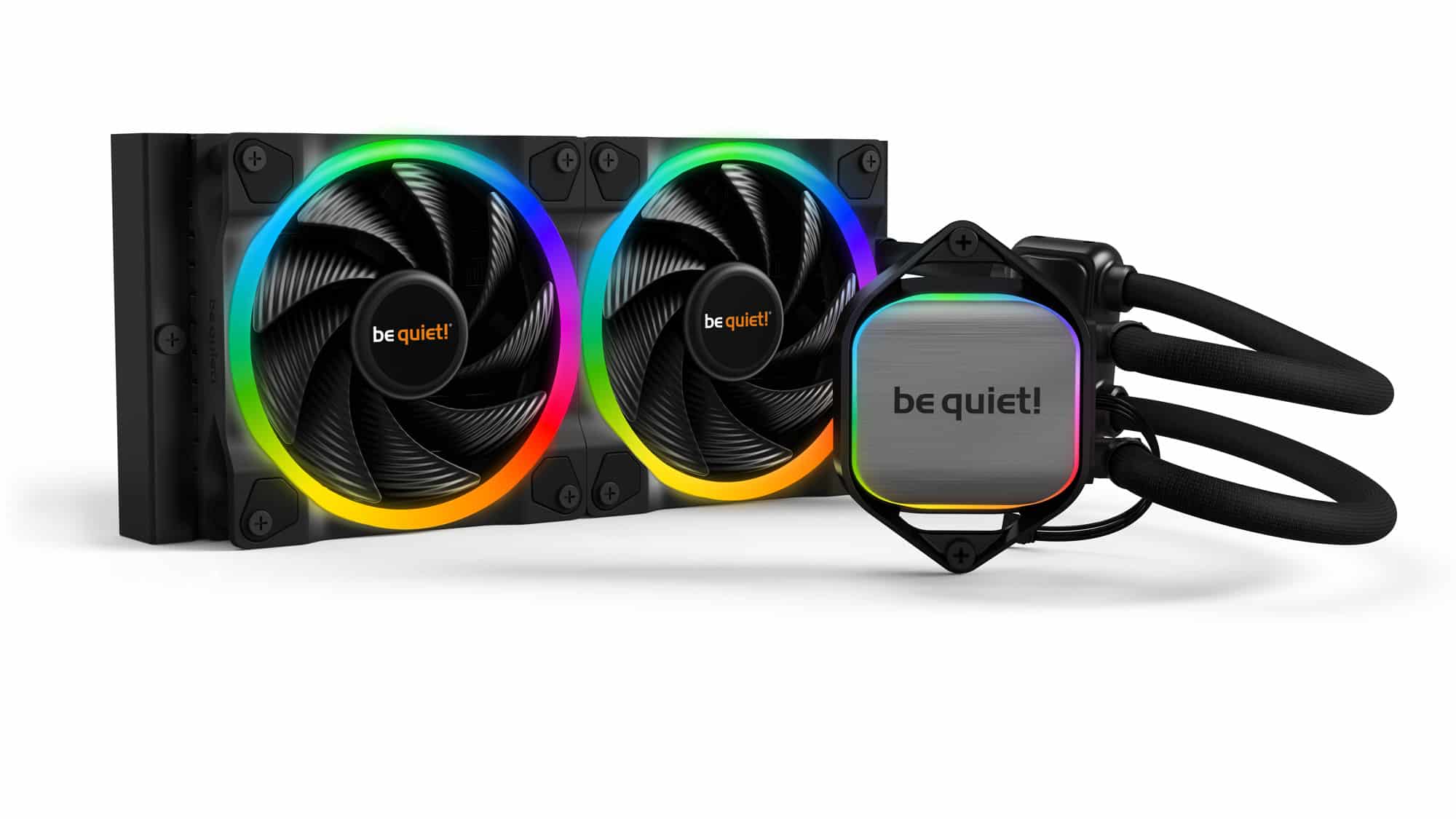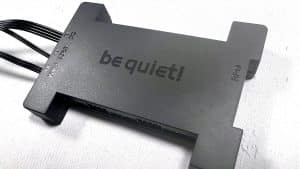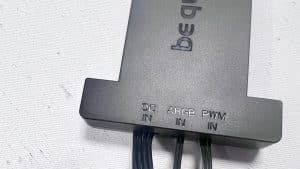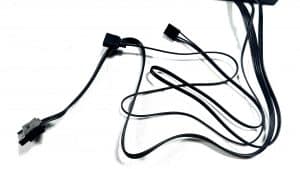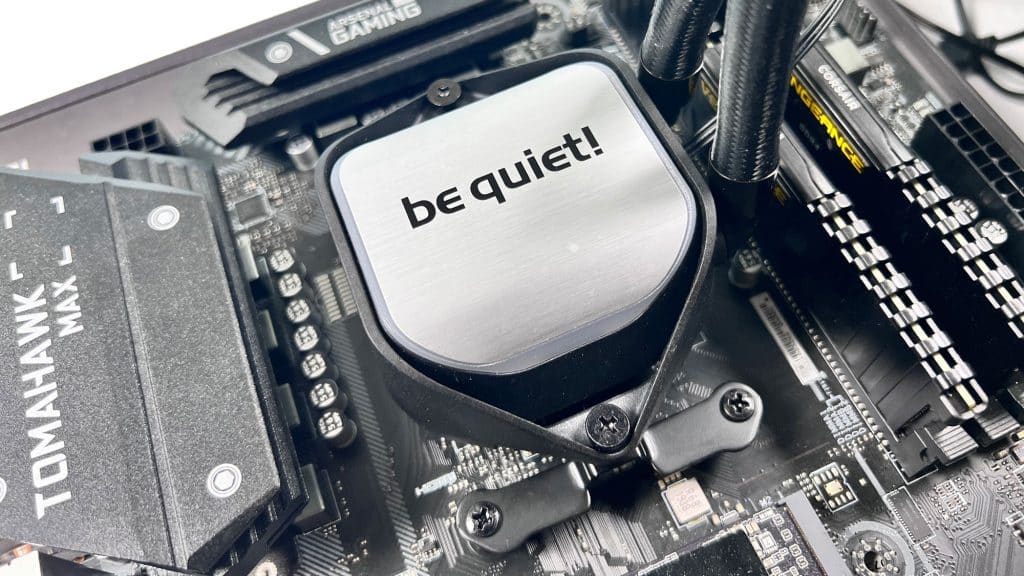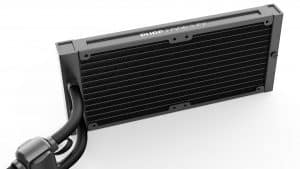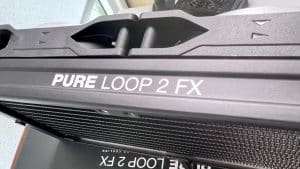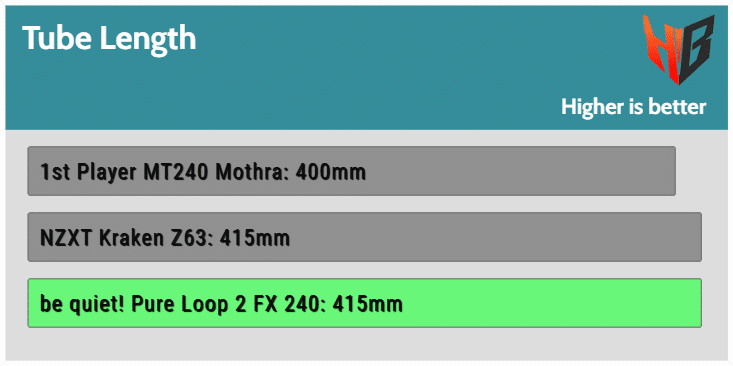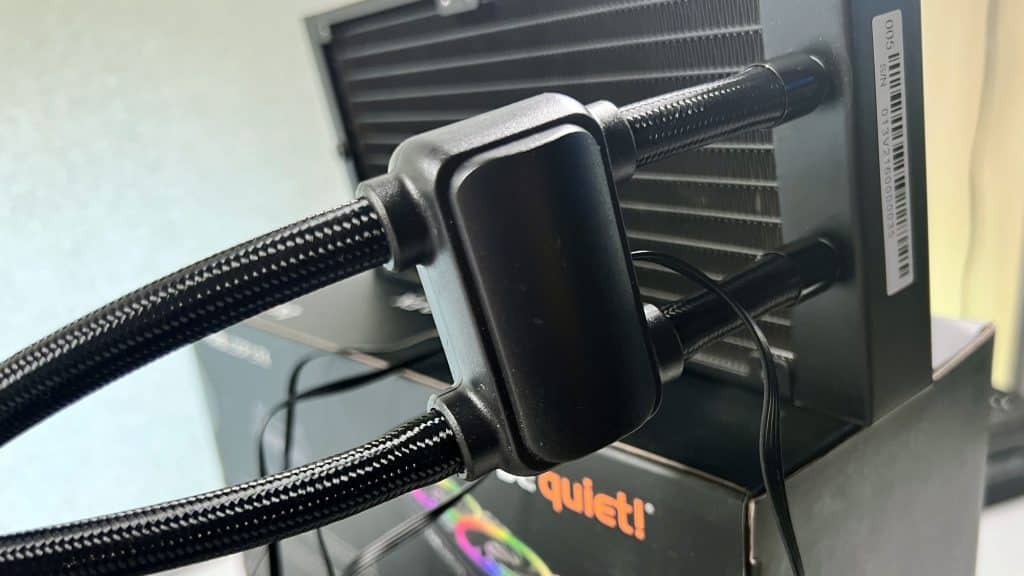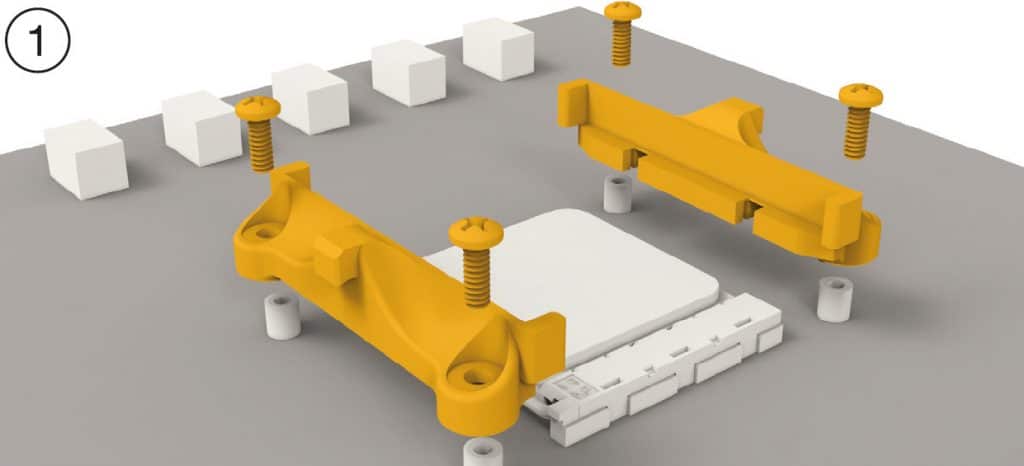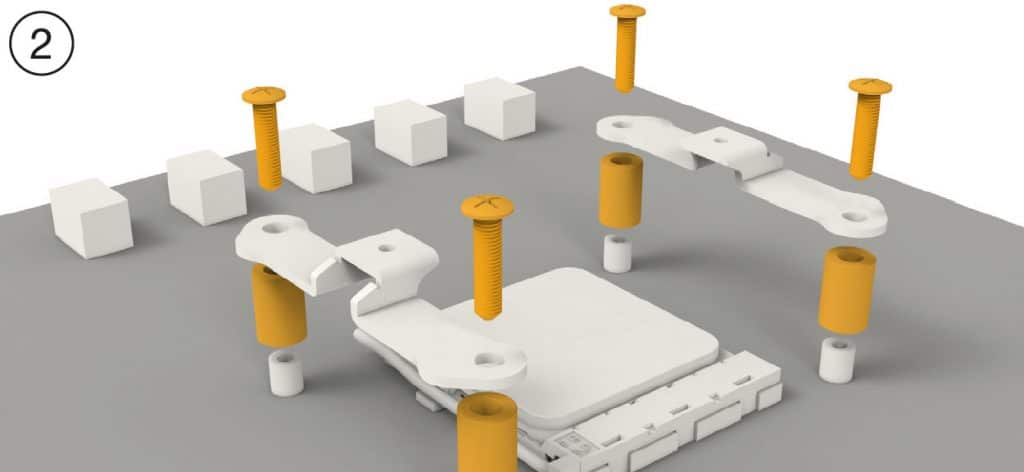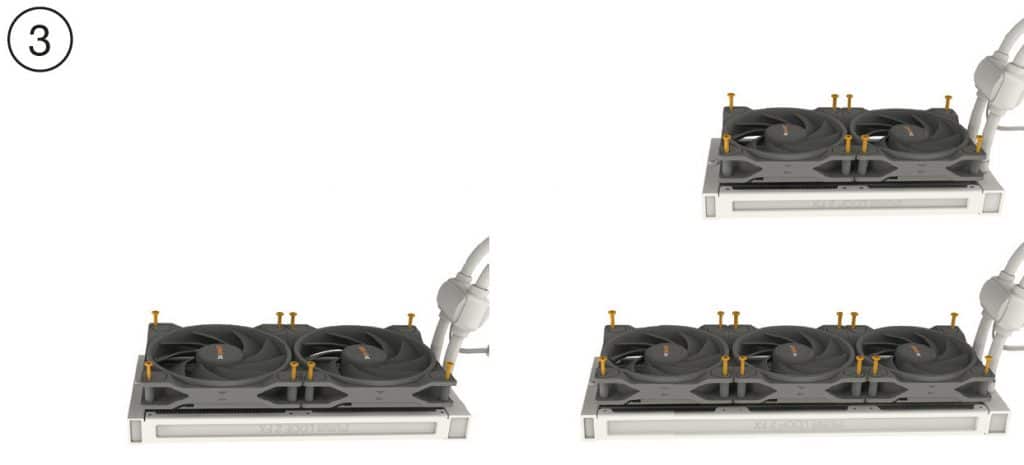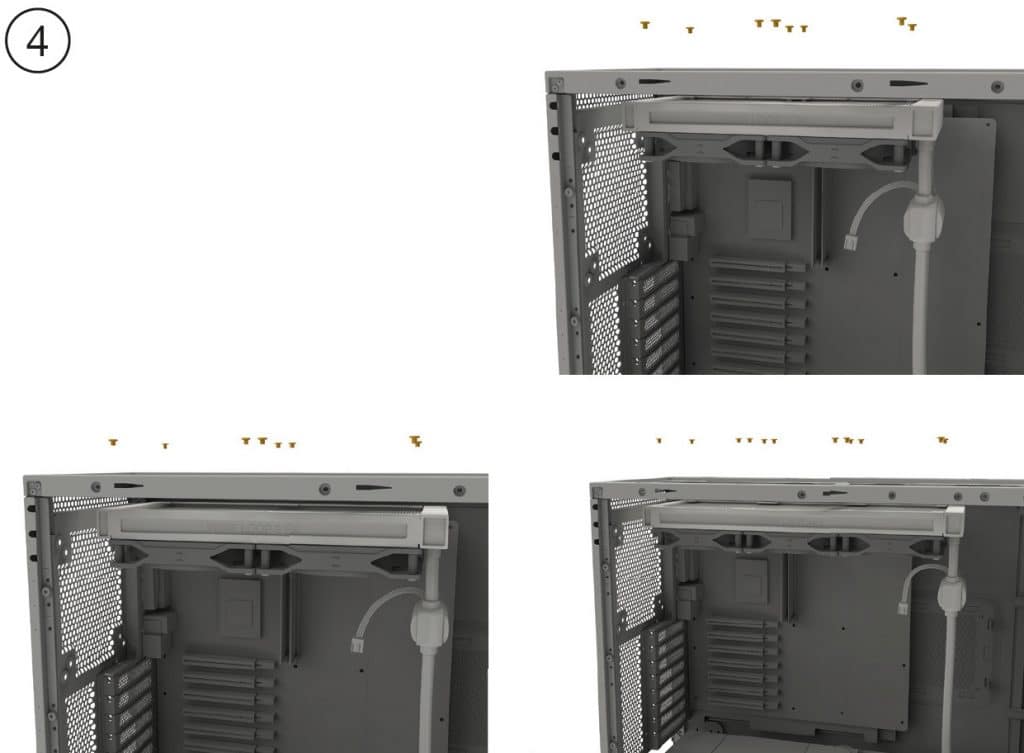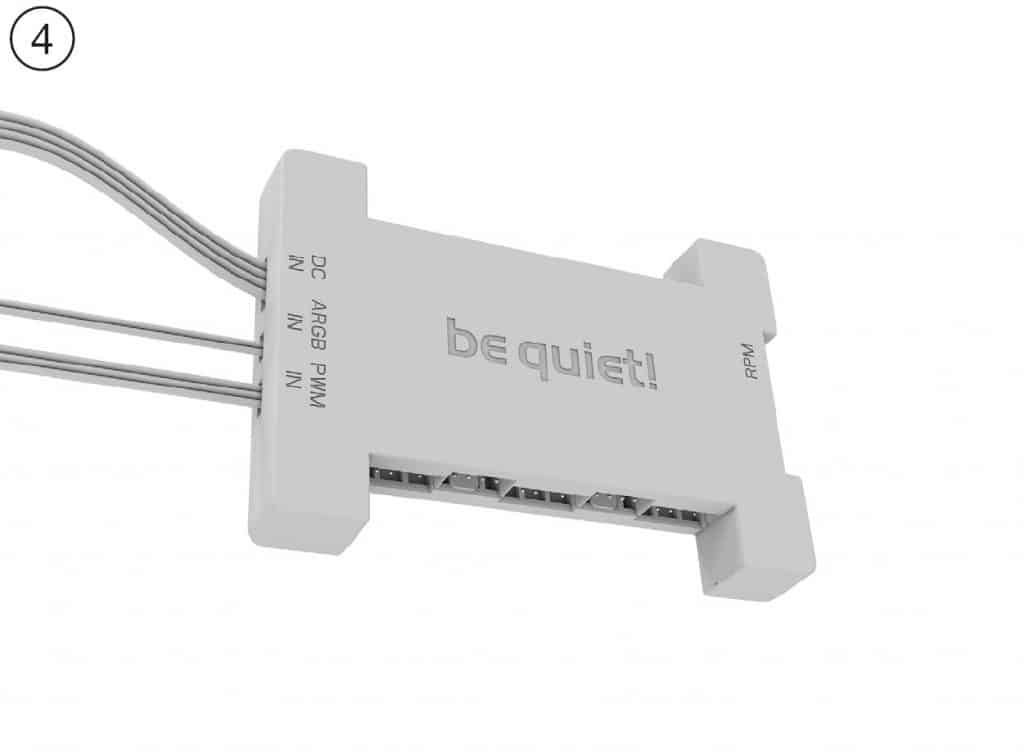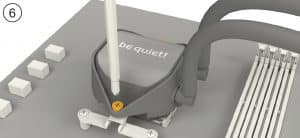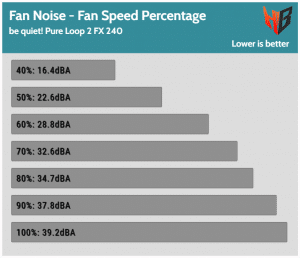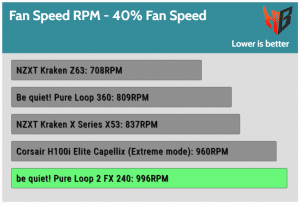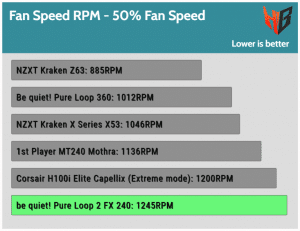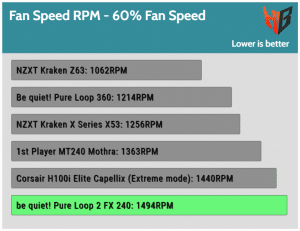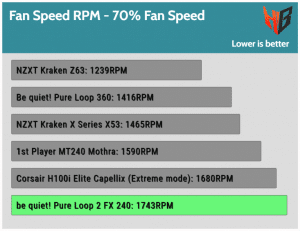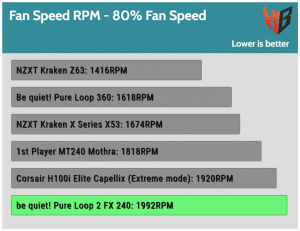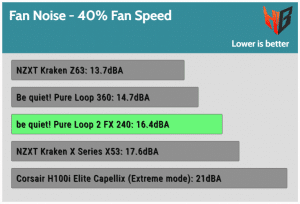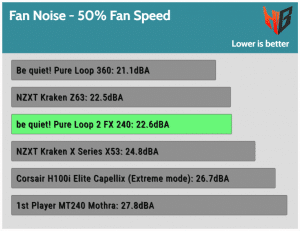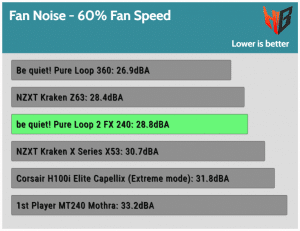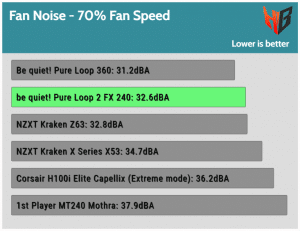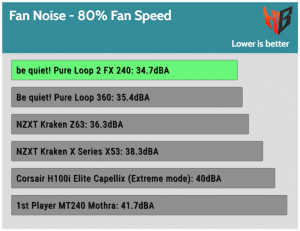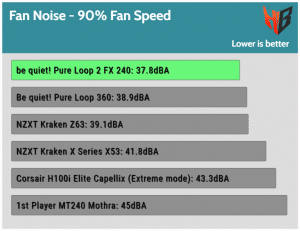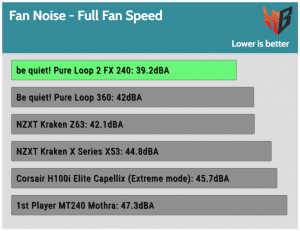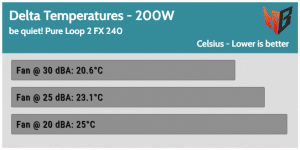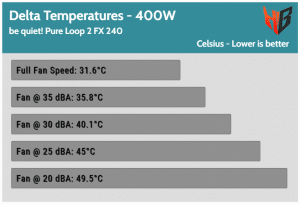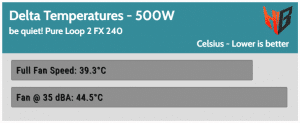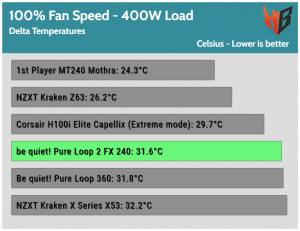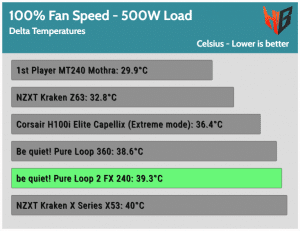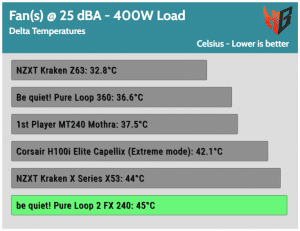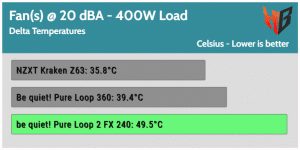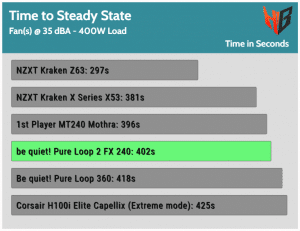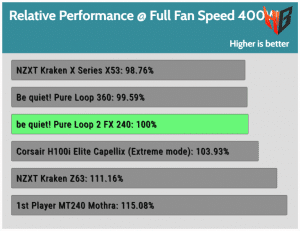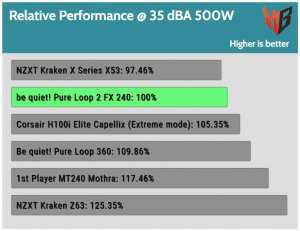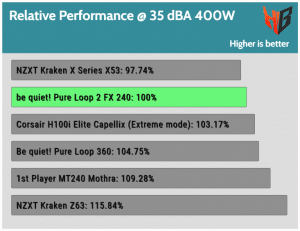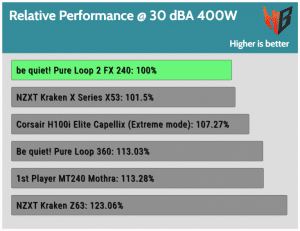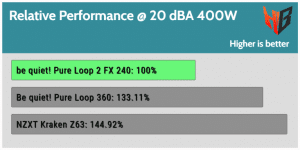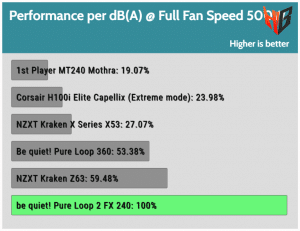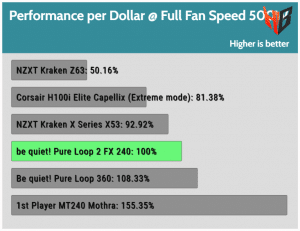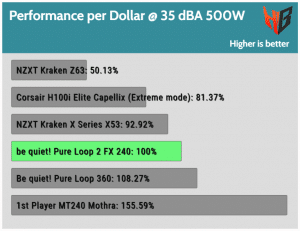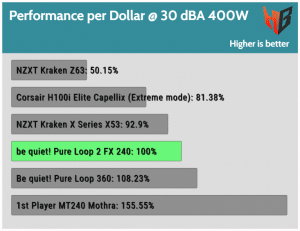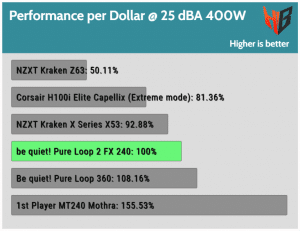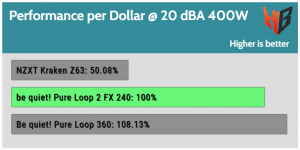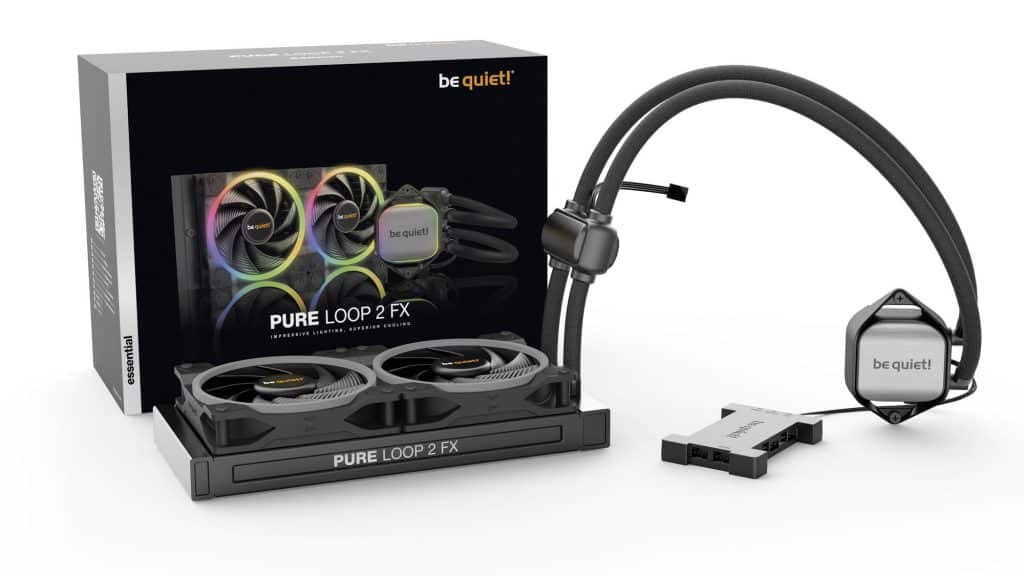The be quiet! Pure Loop 2 FX has several upgrades over the plain model, including the ARGB LEDs, a PWM controlled pump and the Light Wings fans, which replaced the Pure Wings ones, offering better performance thanks to their higher speeds, besides RGB lighting effects. Despite the faster fans, noise is kept low and the Pure Loop 2 FX cooler is among the quietest AIOs available on today’s market.
be quiet! celebrates its 20th year with the FX products equipped with ARGB lighting and the new Light Wings PWM fans, the first fans from this brand to offer RGB lighting. Even traditional brands like be quiet! who weren’t much into RGB have to follow the trend and meet user demand eventually. As the brand mentions in its press release:
Compared to the current Pure Loop series, Pure Loop 2 FX brings stunning improvements to the table for this AIO water cooler: the white LEDs around the cooling block are replaced with ARGB LEDs, while the Pure Wings 2 PWM high-speed fans on the radiator make room for Light Wings PWM high-speed fans for higher static pressure and better visual effects. By popular demand the pump is now PWM-adjustable, allowing better fine-tuning of the performance/noise balance. On top of that, the water cooler includes an ARGB and PWM fan hub.
So besides the nice ARGB lighting effects, you get stronger fans and a PWM-controlled pump, which will help you keep overall noise low. There is also an ARGB/PWM fan hub, which makes the installation process far easier.
The Pure Loop 2 FX line has three models, with 240mm, 280mm, and 360mm radiators. The recommended retail prices are listed below:
- Pure Loop 2 FX 240mm: $129.90 / €129.90 / £123.90
- Pure Loop 2 FX 280mm: $139.90 / €139.90 / £129.99
- Pure Loop 2 FX 360mm: $154.90 / €154.90 / £144.99
The street price difference between the Pure Loop 2 FX 240mm, which I will evaluate in this review, and the Pure Loop 2 is about 20 euros more affordable. That means the new FX 240mm AIO is around 24% more expensive than the plain model.
Cybenetics Cooler DatabaseThe bundle is rich, as you can see in the photo above. It includes a bottle of coolant, which you will need in the long run. The radiator has a fill port, so you can refill the system when it is the time for this (a notable performance drop will alert you about this). The plain Pure Loop 2 AIOs also include a coolant bottle but lack the ARGB/PWM hub.
- Brand: be quiet!
- Model: Pure Loop 2 FX
- Radiator Material: Aluminum
- Base Material: Copper (nickel plating)
- Socket Compatibility AMD: AM5 / AM4
- Socket Compatibility Intel: 1700 / 1200 / 2066 / 1150 / 1151 / 1155 / 2011(-3) square ILM
- Pump Speed: 4000 – 5500 RPM
- Tube Length: 400mm
- Fan Model: Light Wings 120mm PWM high-speed
- Fan Bearing Type: Rifle
- Fan Max Speed: 2500 RPM
- Dimensions (H x W x D): 277 x 120 x 27mm
- Weight: 1180 gr
- Warranty: 3 years
- Retail price: $129.90 / €129.90 / £123.90
A Look At The Product
The block has ARGB lighting around its edges instead of the white LED of the plain Pure Loop 2 AIOs. This doesn’t increase performance, but it is a nice aesthetic touch.
The radiator has a refill port, making it stand out from most radiators provided with other AIOs. This fill port means that you won’t have a tough time once it is time to refill with new coolant, keeping performance at the same levels as day one. The sleeve tubing is also long enough. I measured it at 415mm, while be quiet! is more conservative, stating 400mm.
The pump is in line with the tubes, allowing the block to compact. Moreover, having the pump further from the heat source will enable it to operate at lower temperatures; hence its lifespan gets a nice boost.
The Light Wings fans offer increased performance and ARGB lighting while keeping the noise output as low as possible, thanks to their design! These fans use a rifle-bearing which according to be quiet! has 60,000 hours lifetime at 25°C! The Light Wings fans also use a PWM signal for speed control, which is ideal, allowing for more precise control. You will find more details about these fans on the official page.
Installation
I used an AMD mainboard to try out the Pure Loop 2 FX installation, and I found the whole process to be a piece of cake.
In AMD mainboards, you don’t have to remove the backplate; you use the stock one, while in Intel ones, you exchange the stock backplate with the provided one.
On my AMD mainboard, I first removed the plastic brackets around the socket and installed the corresponding be quiet! brackets.
The next step is to mount the fans onto the radiator.
You mount the radiator on the chassis. It is preferable to have it on top, with the fans pushing air out of the case. This depends on your system’s configuration and chassis, though.
You provide power to the ARGB/PWM hub through a SATA connector, and you connect all fans and the AIO’s pump to it. You can mount the hub on your chassis by using either the provided screws or with the provided double-sided tape. To control the AIO’s ARGB, you must connect the hub to an ARGB header on your mainboard. Unfortunately, there is no manual ARGB control, so if you don’t have a mainboard supporting ARGB lighting, you are out of lack. You won’t be able to utilize the ARGB lighting of this AIO.
The following two steps are to apply thermal paste, there is a small tube in the bundle, and mount the block on the socket.
The block mounted on the mainboard’s socket.
Testing Methodology
I use a fully automated, custom-made CPU cooler testing station that can apply any load from 1W to 500W. At the same time, the fan speed can change automatically, so many test scenarios can be applied without supervising the whole procedure, which can last for several hours. Using a simulated load has several advantages, the most important being that you don’t have to rely on a specific CPU, which will eventually become outdated.
On top of that, no CPU can apply precisely the same load level for a prolonged period. There are always power spikes and drops, which affect, of course, the final result. Using an electronic loader, you can apply precisely the thermal load you want, and besides being more accurate, the whole testing procedure is more straightforward. Finally, I only consider the delta differences between the cooler’s block and the ambient temperature in my lab, where the test system is installed.
Watch the following video to learn more about my load testing tool, Jalapeno.
Noise Output – Fan Speed Percentage and RPM
At full speed, the fans mounted on the radiator output close to 40 dBA noise. This is low for AIO standards.
Fan Speed – Comparison Charts
The Light Wings fan has notably higher RPMs than the Pure Wings fan used in the Pure Loop models, so I expect better performance.
Noise Output – Comparison Charts
The output noise is kept low, despite the stronger fans.
Thermal Performance – 200/400/500W Load
I have the fan speed set at different levels according to the load I provide through Jalapeno. As expected, fan speed notably affects temperatures, especially at high loads.
Thermal Performance – Full Fan Speed Comparison Delta
The small Pure Loop 2 FX performs well with the fans at full speed. The place it achieves in the charts above is not indicative since I didn’t have many 240mm AIOs to compare it with, so I had to use larger ones. It takes the lead from the NZXT X53, but it loses with a significant difference from the MT240 Mothra, which is loud as hell. This is why I have to run some noise-normalized tests, where the fans of all AIOs will output the same noise levels, so the comparison will be fair.
Thermal Performance – Normalized Noise Output
The Mothra is a formidable opponent, even at lower fan speeds. The Loop 2 FX 240 fails to impress me here.
Time to Steady State
I am starting to believe that the time to a steady state doesn’t show anything meaningful. The Pure Loop 2 FX 240 is close to the much more powerful Mothra in this test.
Relative Performance – Full Fan Speed [Jalapeno]
It takes the lead from the X53 and is close to the Pure Loop 360, so the Light Wings fans make a difference in performance.
Relative Performance @ 35 dBA [Jalapeno]
The Pure Loop 360 is far away because of the larger radiator, and the Pure Loop 2 FX only beats the X53. With only exceptions, the Mothra and the X53, all other AIOs use larger AIOs, so the comparison is not 100% fair, but we don’t live in a fair world, either way.
Relative Performance @ 30/25/20 dBA [Jalapeno]
Similar performance to the X53, which has the same dimensions radiator. The Mothra’s performance is impressive for its size.
Performance per dBA – Full Fan Speed [Jalapeno]
Because the dBA scale is logarithmic, and the Pure Loop 2 FX is the quietest AIO of the ones I used for comparison purposes, it gets an easy victory here.
Performance per Dollar – Full Fan Speed [Jalapeno]
I have many performances per dollar charts for you to cover all possible usage scenarios. The Pure Loop 2 FX fares well here, thanks to its fair price. The Pure Loop 360 scores higher but also has a larger radiator, which can be a problem for some chassis.
Epilogue
The new FX products by be quiet! look impressive. I have already tested the Pure Rock 2 FX, which left a good impression on me. The Pure Loop 2 FX is also a good product, but in terms of performance, it didn’t impress me. If I hadn’t tested the 1st Player MT240 Mothra, things could be different, but the latter managed to have a massive lead over the Pure Loop 2 FX in the normalized noise output tests, where fan speed doesn’t play a significant role, but the cooler’s design does.
ARGB lighting is a nice touch, and the build quality is top-notch. The noise output is kept at the lowest possible levels, making the Pure Loop 2 FX one of the quietest AIOs I have ever tested. On top of that, its PWM pump is whisper quiet, and the ARGB/PWM hub is an excellent addition. Speaking of ARGB lighting, the lack of manual control can be a problem for some, but lately, even the most budget mainboards provide ARGB control functionality, so I guess this won’t be an issue for most users. You should keep the lack of manual ARGB control in mind and check if your mainboard has the corresponding header before you purchase a be quiet! FX cooler.
Expect a video soon of this product on our YouTube Channel, Hardware Busters International.
Buy it here- Good memory and GPU clearance
- Silent operation
- Cool ARGB lighting
- High build quality
- PWM ARGB, rifle bearing, fans
- PWM controlled pump
- Compact block thanks to the in-line pump
- Easy installation
- ARGB/PWM hub provided
- The fill port on the radiator allows for its maintenance
- 3-year warranty
- Not impressive overall performance
- Lacks manual ARGB control. Only through a compatible mainboard
- Notable price increase over the plain Pure Loop 2
